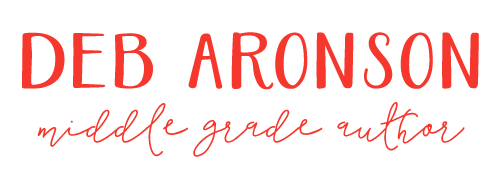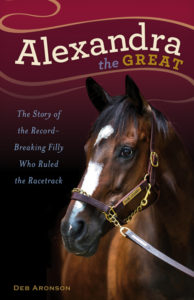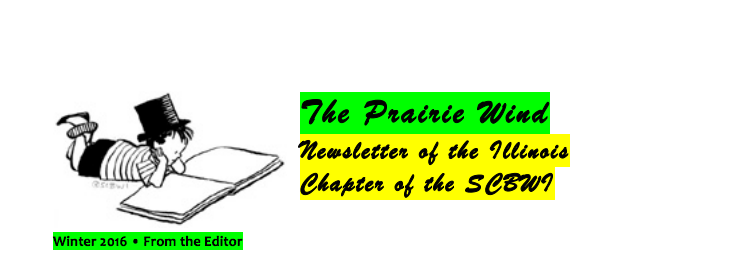My Path to Publication
A few months ago I was asked to contribute to the Prairie Wind, the SCBWI Illinois Chapter’s monthly newsletter. They have a section titled “Tales from the Front” in which people (usually first-time authors) talk about their path to publication. I was tickled to be asked and I decided to post that article here, just to increase (if only by one) its readership.
The link to the entire issue is here:

http://illinois.scbwi.org/wp-content/blogs.dir/34/files/2016/04/winter-2016.pdf
A Story about Battling Self-Doubt, Leaning on Friends (thank you SCBWI!), Persevering … and Jogging
By Deb Aronson
I do not remember dreaming of being a writer. I lived for reading … and sports. But writers were demigods; who had the nerve to tread there? As luck would have it, however, I stumbled into a writing career. For the last 25 years I’ve freelanced for various nonprofit organizations, including universities. That adds up to lots of profiles, science stories, and speeches. It’s a great career, and I love it.
But then I followed my envy. For several years, before our joints and ligaments gave out, I jogged regularly with Alice McGinty (our current co-regional advisor) and Sara Latta (who was a network rep and is now in NYC). I felt so envious hearing about their writing projects that a lightbulb went off … in my heart. How glorious it would be to tell stories that had the power to demystify the world for a preteen reader. I am still, at my core, that preteen, hoping to have the world explained to me. “Ah ha!” I remember thinking, “that is the life for me.”
Six years ago, as 50 was inexorably approaching, I examined my life, as one does. If I wanted what Alice and Sara had, I thought, I’d better get a move on. I remember very clearly when I figured out what my topic would be. I knew it had to be a story I believed in so much that even my self-doubts, which were powerful, could not derail me. I had undertaken several writing projects over the years that had fizzled. I had no faith in my own ability. Demigods, remember?
Still, I had collected ideas off and on through the years, and my file of interesting people doing unusual things was pretty thick. There the story would have ended, except for a weekend bike trip I took with two girlfriends in southern Illinois. I remember sitting on a bridge in the sun (see that? that’s setting, right?) and talking to them about some of the more promising possibilities. One of them said, “Well, which one do you really want to write about?”
Not a deep or particularly surprising question, but somehow, there on that bridge, it focused my mind; I would write about Rachel Alexandra, a three-year-old filly that had taken the racing world by storm in 2009. She was beautiful and strong and athletic and had a very distinctive blaze, like an upside-down exclamation point with a bite taken out of it.
I am not a “horse person” and I knew nothing about horseracing. But I loved the story of this incredibly athletic, albeit four-legged, female barreling past the fillies her age, then the colts her age, and then finally males twice her age. She ruled the racetrack and was featured in Vogue magazine. As a sailor, swimmer, and former field hockey and softball player, I say, let’s celebrate athletic females!
But this project wasn’t like my day job, where I was given an assignment and my subjects were thrilled to speak with me. I went online, of course, and did basic research, but there just seemed to be no clear way to contact these scions of the horseracing world. That was because Rachel Alexandra’s current owners are the billionaire founders of Jackson-Kendall winery and were pretty well shielded from the likes of me. I was ready to give up, again, (fizzle … fizzle), when a friend recommended I contact the Lexington, KY, visitors’ bureau. That shook some things loose.
Thanks to the visitors’ bureau, I met a horsewoman with deep ties to the community. I went to Lexington, she shared her box with me, and we watched the races. I thought Rachel Alexandra’s jockey, Calvin Borel, would be there and that I’d be able to walk up, introduce myself, and interview him. Likewise, the various trainers I was hoping to talk to. Har Har Har, as they say in the funny papers. First of all, Calvin was riding elsewhere (duh!). Meanwhile, my host very gently explained that there was no way in hell that Rachel’s famous, very busy trainer would talk to me, a nobody who wasn’t part of the horseracing world. As I talked more about my vision, she said to me, “You know who you need to meet? Hal Wiggins.”
Wiggins was Rachel Alexandra’s first trainer and is the most humble, generous, and kind man you would ever meet. Long story short, I wrote Hal a letter, he replied immediately, and I flew to Houston to interview him and his wife, Renee, for two days. Simply put, “Rachel Alexandra Ruler of the Racetrack” would have been stillborn if not for Hal and Renee.
By now I was 52. I was determined to learn how to tell a story, and for several years I worked on my craft. The fact is, in my work for hire, the goal is absolutely to TELL. I do not have the luxury of showing. It has been very hard to change gears, to infuse my story with a sense of setting and plot. One thing I did that helped was to join a critique group (I’m talking to you, Six Pens!). There I got some pats on the back, reminders to “show, don’t tell,” and a group of people to learn with. Priceless, right? I also went, not only to Prairie Writers and Illustrators Day, but to several other SCBWI conferences.
During this time, a few editors and published writers (including Steve Sheinkin, author of Bomb) also looked at my first pages, and I faithfully studied the comments and critiques from them and my fellow writers. I thought I could see my manuscript improving, which was exciting.
Still, the idea of submitting to a publisher was so terrifying I broke out in (metaphorical) hives at the thought. BUT! plot twist: So many people in the horseracing world (thanks to Hal’s introductions) had generously given me their time that I felt that I couldn’t give up. That sense of accountability I felt toward that community turned out to be critical. I pushed ahead. I knew the next step was to submit the darn thing.
This is another place where I knew my self-doubt could really sabotage me. Who hasn’t heard about the person who got 100 rejections before their project found a home? 100?! I could imagine giving up after three! But I was determined; I finally had enough faith in my vision that I would NOT let rejection get in the way of publishing my story.
So first I made a long list (with the aid of SCBWI’s The Book) of potential publishers. Next I made an Excel spreadsheet. There I entered each publisher to whom I submitted, the date I submitted, whether or not I got a response, and if they sent any comments I included them too.
That way, when I felt really discouraged, I would count the number of submissions on my spreadsheet and realize it was only in the single digits. “Quit yer griping,” I could say to myself. Secondly, I could easily check the date I had sent the last submission. The prepared list meant I didn’t have to go research the next publisher each time I gave up on the previous one. That made it pretty easy, psychologically at least, to resubmit. I did, however, make extra sure to rigorously follow the guidelines of the particular publisher, which are all a little different.
I collected potential publishers anywhere I could. I trolled the back of the SCBWI magazine looking for nonfiction books about strong women or athletes and added that publisher to my list. I also talked to friends. For example, Sara Latta had published a nonfiction book with Candlewick, and she let me use her name when I contacted that editor. I thought it might help differentiate me within the slush pile. That turned out to be a huge shot in the arm because I got the greatest rejection ever from that editor, Alyssa Pusey. She sent me a letter that read, in part, “it’s a thrilling, well-written tale—just the kind of interesting, unexpected nonfiction I like best.” See what I mean? Isn’t that the greatest?
In the end, over 18 months I submitted the manuscript to a total of 13 publishers (and a couple of agents). Just like Rachel Alexandra, 13 is my lucky number! (Read the book to find out what I am referring to.)
Even though I am still swamped with self-doubt many days, I do think that studying the craft, getting critiques, and trying like heck to apply what I learned made it possible for me to feel confident about sending my story out into the world. Rachel Alexandra will be published in the fall of 2016. I’m already planning a book signing Derby weekend at the Churchill Downs gift shop. Hey! A girl can dream, can’t she?!



0 Comments